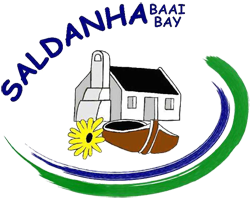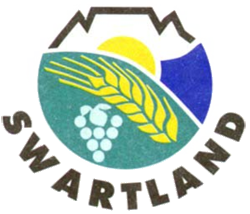At common law, damages are a remedy in the form of a monetary award to be paid to a claimant as compensation for loss or injury. To warrant the award, the claimant must show that a breach of duty has caused foreseeable loss. To be recognized at law, the loss must involve damage to property, or mental or physical injury; pure economic loss is rarely recognized for the award of damages.

Johan Anthoniszoon "Jan" van Riebeeck was a Dutch navigator, ambassador and colonial administrator of the Dutch East India Company.

East London is a city on the southeastern coast of South Africa, in the Buffalo City Metropolitan Municipality, Eastern Cape Province. The city lies on the Indian Ocean coast, largely between the Buffalo River and the Nahoon River, and hosts the country's only river port. As of 2011, East London had a population of over 267,000 with over 755,000 in the surrounding metropolitan area.

District Six is a former inner-city residential area in Cape Town, South Africa. In 1966, the apartheid government announced that the area would be razed and rebuilt as a "whites only" neighbourhood under the Group Areas Act. Over the course of a decade, over 60,000 of its inhabitants were forcibly removed and in 1970 the area was renamed Zonnebloem, a name that makes reference to an 18th century colonial farm. At the time of the proclamation, 56% of the district’s property was White-owned, 26% Coloured-owned and 18% Indian-owned. Most of the residents were Cape Coloureds and they were resettled in the Cape Flats. The vision of a new white neighbourhood was not realised and the land has mostly remained barren and unoccupied. The original area of District Six is now partly divided between the suburbs of Walmer Estate, Zonnebloem, and Lower Vrede, while the rest is generally undeveloped land.

Witzenberg Municipality is a local municipality located within the Cape Winelands District Municipality, in the Western Cape province of South Africa. As of 2022 it had a population of 103,765.

Drakenstein Municipality is a local municipality located within the Cape Winelands District Municipality, in the Western Cape province of South Africa. As of 2011, it had a population of 251,262. Its municipality code is WC023.

Bergrivier Municipality is a local municipality in the Western Cape province of South Africa. It governs the towns of Piketberg, Velddrif and Porterville, as well as the surrounding villages and rural areas. As of 2011, it had a population of 61,897. It is located within the West Coast District Municipality and its municipality code is WC013.

Saldanha Bay Municipality is a local municipality located within the West Coast District Municipality, in the Western Cape province of South Africa. As of 2011, it had a population of 99,193. Its municipality code is WC014.

Swartland Municipality is a local municipality located in the Western Cape province of South Africa. Malmesbury is the seat of the municipality. As of 2022, it had a population of 148,331. Its municipality code is WC015.

Apartheid was a system of institutionalised racial segregation that existed in South Africa and South West Africa from 1948 to the early 1990s. It was characterised by an authoritarian political culture based on baasskap, which ensured that South Africa was dominated politically, socially, and economically by the nation's minority white population. Under this minoritarian system, white citizens held the highest status, followed by Indians, Coloureds and black Africans, in that order. The economic legacy and social effects of apartheid continue to the present day, particularly inequality.

Group Areas Act was the title of three acts of the Parliament of South Africa enacted under the apartheid government of South Africa. The acts assigned racial groups to different residential and business sections in urban areas in a system of urban apartheid. An effect of the law was to exclude people of colour from living in the most developed areas, which were restricted to Whites. It required many people of colour to commute large distances from their homes to be able to work. The law led to people of colour being forcibly removed for living in the "wrong" areas. People of colour, who were the majority at the time, were given much smaller areas to live in than the white minority. Pass Laws required people of colour to carry pass books and later "reference books", similar to passports, to enter the "white" parts of the country.

Indian South Africans are South Africans who descend from indentured labourers and free migrants who arrived from British India during the late 1800s and early 1900s. The majority live in and around the city of Durban, making it one of the largest ethnically Indian-populated cities outside of India.

Riebeek-Kasteel is one of the oldest towns in South Africa, situated at 80 km north-east of Cape Town in The Riebeek Valley together with its sister town Riebeek West. They set off in the direction of Paardeberg and on 3 February 1661 they ascended a lonely mountain and came upon the fertile vista of the Riebeek Valley. They named it Riebeek Kasteel, in honor of the Commander.

The Western Cape Anti-Eviction Campaign was a non-racial popular movement made up of poor and oppressed communities in Cape Town, South Africa. It was formed in November 2000 with the aim of fighting evictions, water cut-offs and poor health services, obtaining free electricity, securing decent housing, and opposing police brutality.

Riebeek West is a small town situated about 75 km north-east of Cape Town and 5 km north of its twin town Riebeek Kasteel in the Swartland area of the Western Cape, South Africa.

The Coloured Persons Communal Reserves Act of 1961, was an Apartheid South Africa piece of legislation, which was enacted to apply the Mission Stations and Communal Reserves Act 1909, of the Cape of Good Hope, to coloured persons settlement areas within the meaning of the Coloured Persons Settlement Areas (Cape) Act, 1930, to repeal the latter Act and to provide for matters incidental thereto.
Land reform in South Africa is the promise of "land restitution" to empower farm workers and reduce inequality. This also refers to aspects such as, property, possibly white-owned businesses. Proponents argue it will allow previously unemployed people to participate in the economy and better the country's economic growth. It also relates to restitution in the form of settling Land Claims of people who were forcefully removed from their homes in urban areas that were declared white, by the apartheid government's segregationist Group Areas Act: such areas include Sophiatown, Fietas, Cato Manor, District Six and Greyville; as well as restitution for people forcibly evicted from rural land because of apartheid policies.

Trafalgar High School is a public English medium co-educational secondary school in District Six of Cape Town in South Africa. It was the first school built in Cape Town for coloured and black students. The school took a leading role in protesting against apartheid policies. It celebrated its centenary in 2012 and is still running and was recently declared a heritage site.

The Preservation of Coloured Areas Act of 1961, was an Apartheid South Africa piece of legislation. It was ostensibly enacted to prevent land in coloured areas from being taken without compensation to the owner even if the owner had not registered his claim. It further entrenched "Coloured Areas" in the law.
Oukloof was a small rural community in the Western Cape of South Africa that was forcibly removed from their homes in 1965, and relocated in a nearby location now known as Esterhof.


















